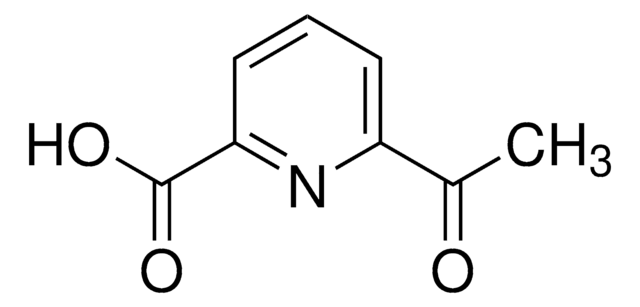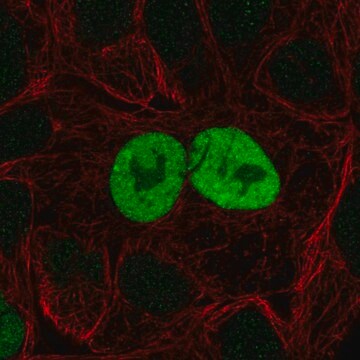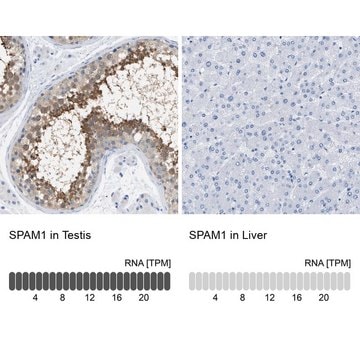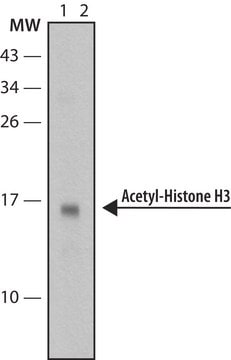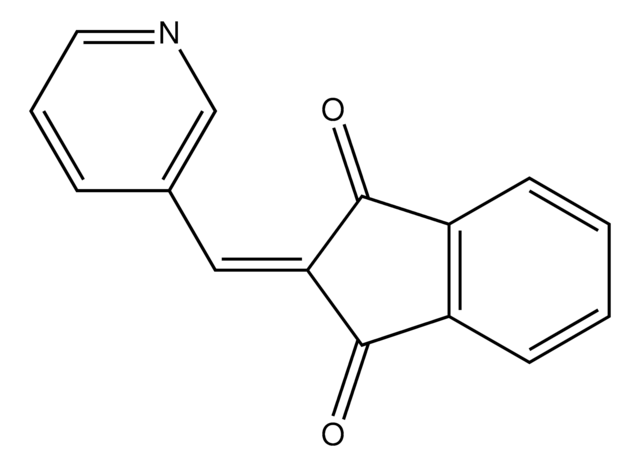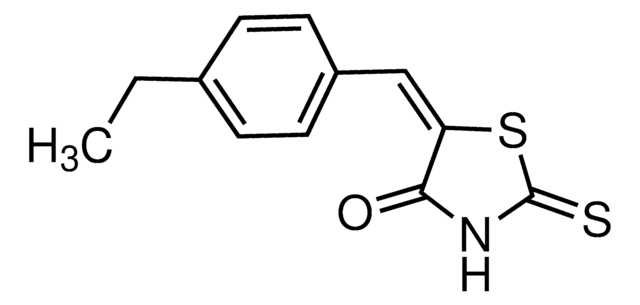SML0766
GSK343
≥98% (HPLC)
Synonym(s):
N-[(1,2-Dihydro-6-methyl-2-oxo-4-propyl-3-pyridinyl)methyl]-1-(1-methylethyl)-6-[2-(4-methyl-1-piperazinyl)-4-pyridinyl]-1H-indazole-4-carboxamide, N-[(6-Methyl-2-oxo-4-propyl-1,2-dihydropyridin-3-yl)methyl]-6-[2-(4-methylpiperazin-1-yl)pyridin-4-yl]-1-(propan-2-yl)-1H-indazole-4-carboxamide
About This Item
Recommended Products
Quality Level
Assay
≥98% (HPLC)
form
powder
color
, white to beige to brown
solubility
DMSO: 15 mg/mL, clear
storage temp.
2-8°C
SMILES string
CN(CC1)CCN1C2=NC=CC(C3=CC4=C(C=NN4C(C)C)C(C(NCC5=C(CCC)C=C(C)NC5=O)=O)=C3)=C2
InChI
1S/C31H39N7O2/c1-6-7-23-14-21(4)35-31(40)26(23)18-33-30(39)25-15-24(16-28-27(25)19-34-38(28)20(2)3)22-8-9-32-29(17-22)37-12-10-36(5)11-13-37/h8-9,14-17,19-20H,6-7,10-13,18H2,1-5H3,(H,33,39)(H,35,40)
InChI key
ULNXAWLQFZMIHX-UHFFFAOYSA-N
Related Categories
Application
- as an inhibitor of enhancer of zeste homolog 2 (EZH2) to assess the impact of chromatin condensation on cell migration
- as histone methyl transferase inhibitor, to suppress the Polyandrocarpa misakiensis, mitochondrial non-coding-region (NCR) PmNCR reporter gene expression, facilitated by TC14-3
- as a supplement in the growth medium to inhibit the generation of H3K27me3 or to inhibit RNA polymerase II
- as EZH2 inhibitor to treat castration-resistant neuroendocrine prostate cancer (CRPC-NE)
Biochem/physiol Actions
To learn about other SGC chemical probes for epigenetic targets, visit sigma.com/sgc
Features and Benefits
Other Notes
related product
Signal Word
Warning
Hazard Statements
Precautionary Statements
Hazard Classifications
Acute Tox. 4 Oral
Storage Class Code
11 - Combustible Solids
WGK
WGK 3
Flash Point(F)
Not applicable
Flash Point(C)
Not applicable
Certificates of Analysis (COA)
Search for Certificates of Analysis (COA) by entering the products Lot/Batch Number. Lot and Batch Numbers can be found on a product’s label following the words ‘Lot’ or ‘Batch’.
Already Own This Product?
Find documentation for the products that you have recently purchased in the Document Library.
Customers Also Viewed
Articles
We offer a variety of small molecule research tools, such as transcription factor modulators, inhibitors of chromatin modifying enzymes, and agonists/antagonists for target identification and validation in gene regulation research; a selection of these research tools is shown below.
We offer a variety of small molecule research tools, such as transcription factor modulators, inhibitors of chromatin modifying enzymes, and agonists/antagonists for target identification and validation in gene regulation research; a selection of these research tools is shown below.
We offer a variety of small molecule research tools, such as transcription factor modulators, inhibitors of chromatin modifying enzymes, and agonists/antagonists for target identification and validation in gene regulation research; a selection of these research tools is shown below.
We offer a variety of small molecule research tools, such as transcription factor modulators, inhibitors of chromatin modifying enzymes, and agonists/antagonists for target identification and validation in gene regulation research; a selection of these research tools is shown below.
Our team of scientists has experience in all areas of research including Life Science, Material Science, Chemical Synthesis, Chromatography, Analytical and many others.
Contact Technical Service




